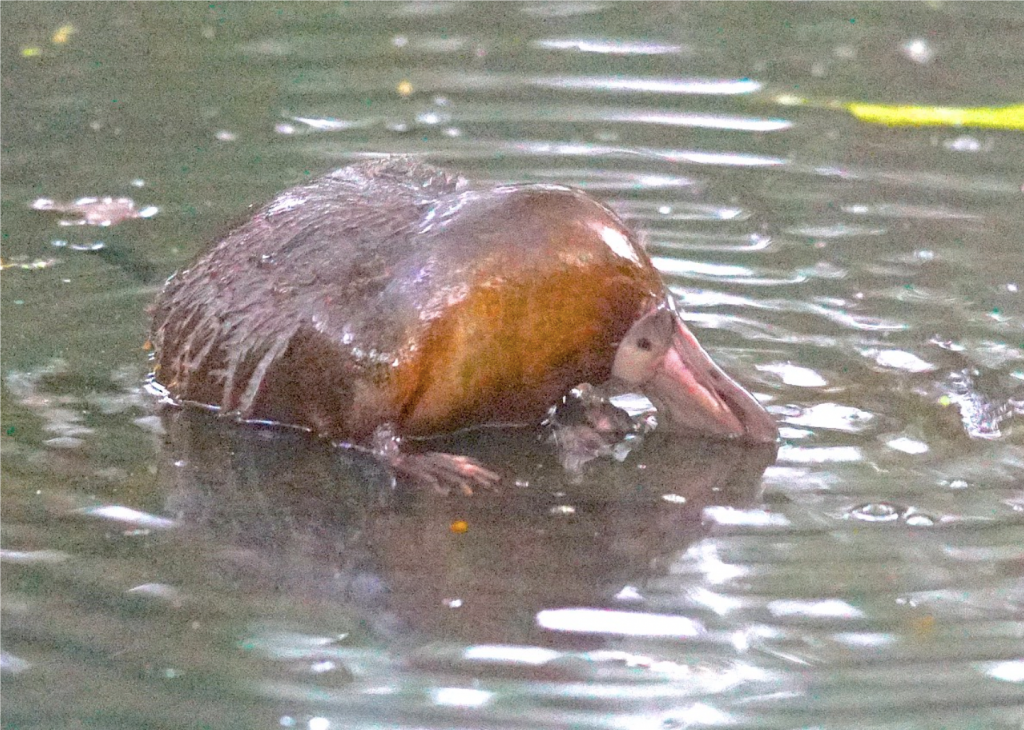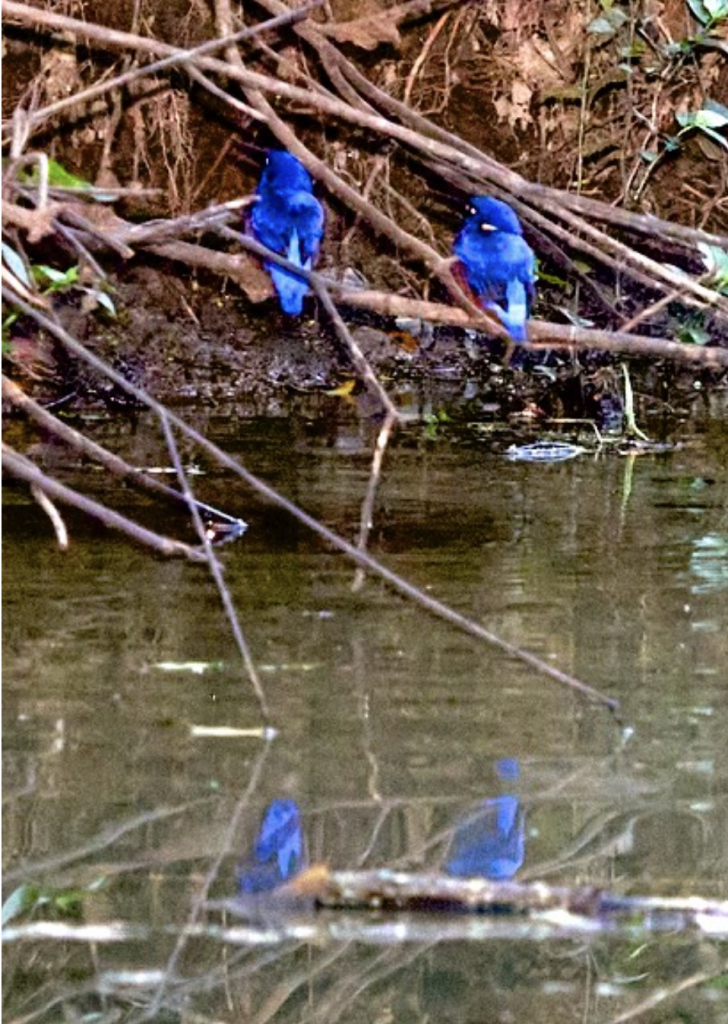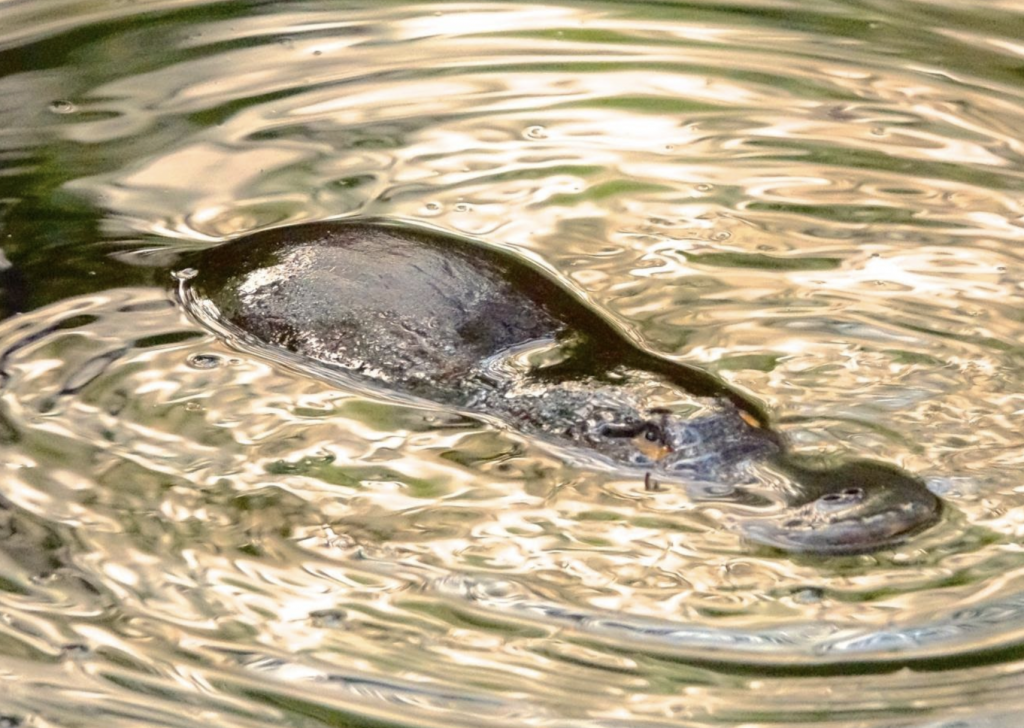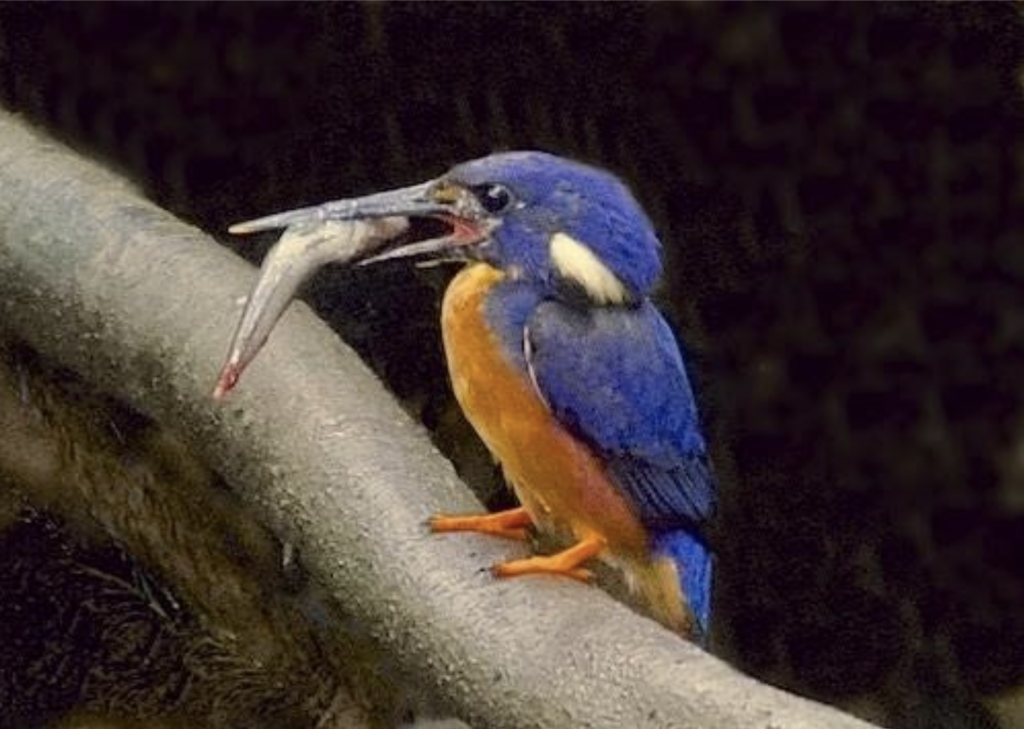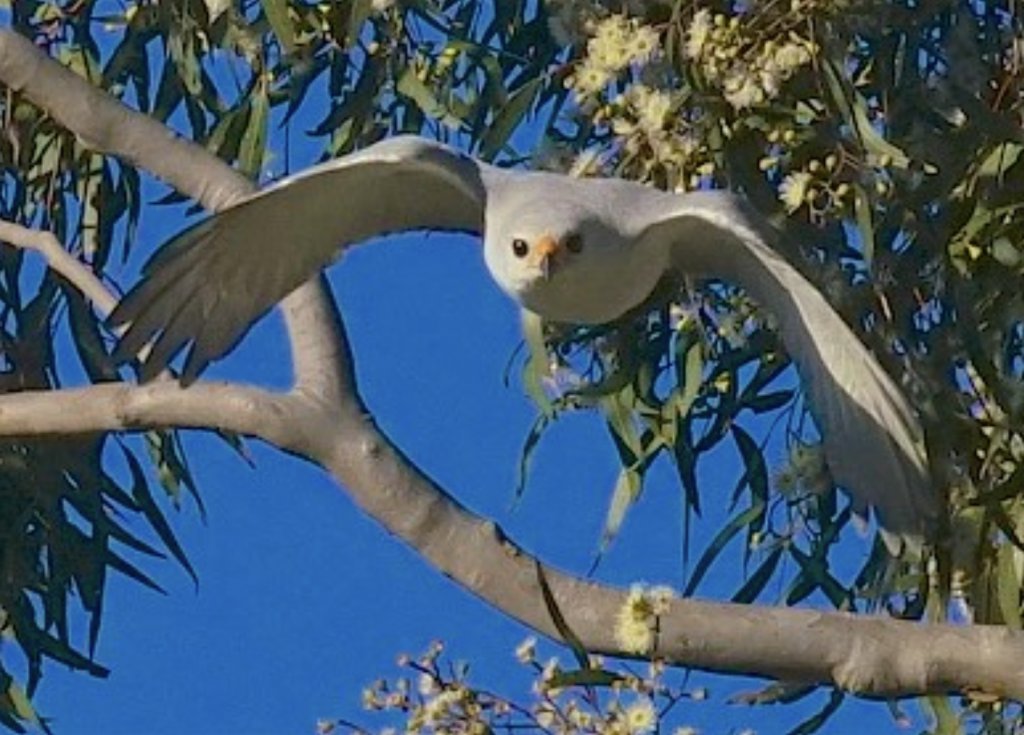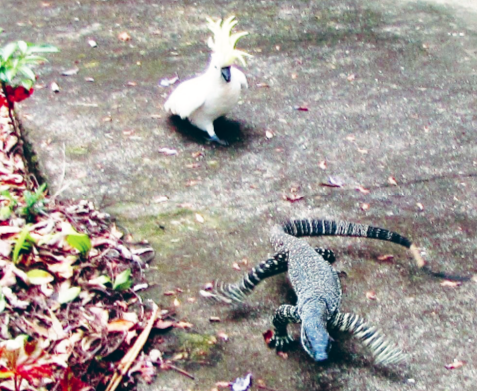There were at least 12 sightings this year which is great news and indicates that platypus are persisting in the Moggill Creek Catchment.
(Check out the map showing sightings and video below)
Key findings:
- Some observers saw two platypus
- When examining the times recorded, some may have been the same animals seen again by other observers downstream or upstream
- Three sightings in lower Gold Creek. In addition, on the evening before the survey, two platypus were video recorded at the confluence of Gold and Moggill creeks on a private property. The two were seen vigorously interacting
- One sighting in Moggill Creek near the Showgrounds
- Six sightings in mid-Moggill Creek, off Rafting Ground Road (Huntington Estate)
- One sighting a little further downstream in Kenmore Hills
- One sighting in a large pool in lower Moggill Creek, near Moggill Road
Unfortunately, many of our core historical platypus hotspots were again negative this year and this has been the pattern for some years. These include upper Moggill Creek (Upper Brookfield), mid-Moggill Creek (Kenmore High School region), lower Moggill Creek (Kilkivan/Fortrose Street area) and mid-upper Gold Creek. This is always a concern, with water extraction from the creeks and general watercourse degradation from human activities continuing to occur in what is a peri-urban environment. Interestingly, the sightings this year were, however, mostly in the more urbanised creek areas.
Thank you again to Dr Christine Hosking for running the annual Platypus Survey in Moggill Creek Catchment and to all the volunteers who are up early for Platypus watching.

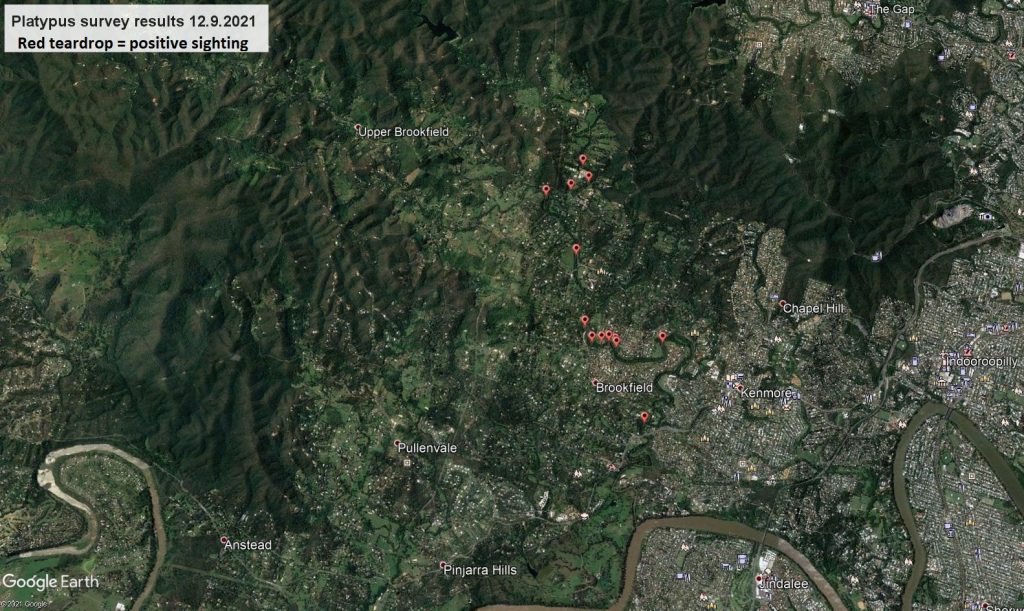
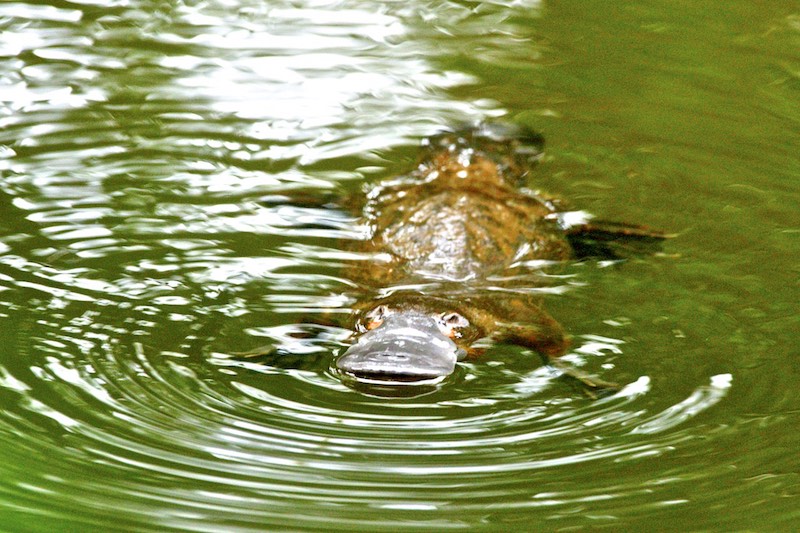 Platypus Moggill Creek Photo: Ed Frazer
Platypus Moggill Creek Photo: Ed Frazer
